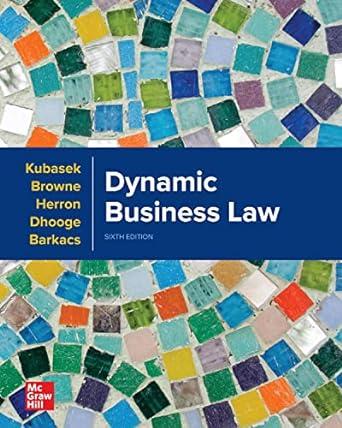The Brian B. Sand & Zachary B. Sand Joint Trust (the Trust) sued the Biotechnology Value Fund
Question:
The Brian B. Sand & Zachary B. Sand Joint Trust (the Trust) sued the Biotechnology Value Fund (BVF) under Section 16(b) of the Securities Exchange Act of 1934. Mark Lampert controlled BVF as well as four other hedge funds at issue: Biotechnology Value Fund, LP; Biotechnology Value Fund II, LP; Investment 10, LLC; and MSI BVF SPV, LLC. Lampert was the sole officer and director of each of these funds, either directly or through BVF. In addition, all financial decisions for all of the entities were made by Lampert.
Recall that Section 16(b) requires all statutory insiders to return short-swing profits. Statutory insiders also include “beneficial owners” of more than 10 percent of any equity security of a company. In this case, the Trust sued BVF, Lampert, and the other hedge funds for buying and selling common stock shares of Oncothyreon, Inc., of which the Trust is a shareholder, while collectively owning at least 10 percent of Oncothyreon. The Trust argues that the “interrelated nature and structure of [defendants]” means that Lampert and the hedge funds could be held liable under Section 16(b). The defendants moved for summary judgment, arguing that the Trust’s allegations were insufficient to prove that Lampert and BVF actually held 10 percent of Oncothyreon shares.
Do you think groups of individuals or other entities such as companies and investment funds should be collectively classifiable as beneficial owners and therefore liable under Section 16(b)? What are the implications if they are? What are the implications if they are not?
How do you think the court decided this question?
Step by Step Answer:

Dynamic Business Law
ISBN: 9781260733976
6th Edition
Authors: Nancy Kubasek, M. Neil Browne, Daniel Herron, Lucien Dhooge, Linda Barkacs





